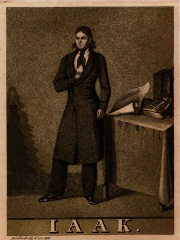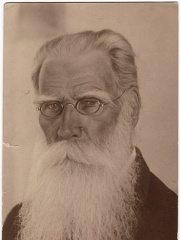
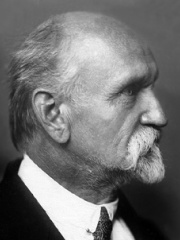
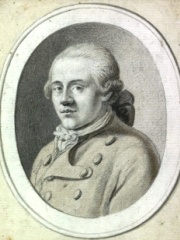

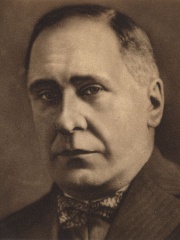
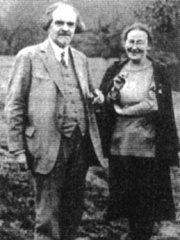
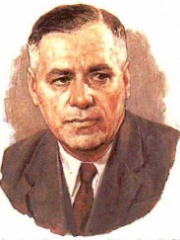
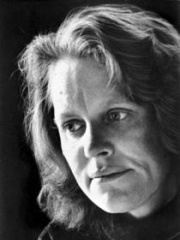
The Most Famous
WRITERS from Latvia
This page contains a list of the greatest Latvian Writers. The pantheon dataset contains 7,302 Writers, 30 of which were born in Latvia. This makes Latvia the birth place of the 41st most number of Writers behind Azerbaijan, and Serbia.
Top 10
The following people are considered by Pantheon to be the top 10 most legendary Latvian Writers of all time. This list of famous Latvian Writers is sorted by HPI (Historical Popularity Index), a metric that aggregates information on a biography's online popularity. Visit the rankings page to view the entire list of Latvian Writers.

1. Aron Nimzowitsch (1886 - 1935)
With an HPI of 68.87, Aron Nimzowitsch is the most famous Latvian Writer. His biography has been translated into 43 different languages on wikipedia.
Aron Nimzowitsch (Latvian: Ārons Nimcovičs; Russian: Аро́н Иса́евич Нимцо́вич, Aron Isayevich Nimtsovich; 7 November 1886 – 16 March 1935) was a Russian-born Danish chess player and writer. In the late 1920s, Nimzowitsch was one of the best chess players in the world. He was the foremost figure amongst the hypermoderns and wrote a very influential book on chess theory: My System (1925–1927). Nimzowitsch's seminal work Chess Praxis, originally published in Germany, in 1929, was purchased by a pre-teen and future World Champion Tigran Petrosian and was to have a great influence on his development as a chess player.

2. Rainis (1865 - 1929)
With an HPI of 65.60, Rainis is the 2nd most famous Latvian Writer. His biography has been translated into 32 different languages.
Jānis Pliekšāns (11 September 1865 – 11 September 1929), known by his pseudonym Rainis, was a Latvian poet, playwright, translator, and politician. Rainis' works include the classic plays Uguns un nakts (Fire and Night, 1905) and Indulis un Ārija (Indulis and Ārija, 1911), and a highly regarded translation of Goethe's Faust. His works had a profound influence on the literary Latvian language, and the ethnic symbolism he employed in his major works has been central to Latvian nationalism.

3. Jakob Michael Reinhold Lenz (1751 - 1792)
With an HPI of 64.82, Jakob Michael Reinhold Lenz is the 3rd most famous Latvian Writer. His biography has been translated into 30 different languages.
Jakob Michael Reinhold Lenz (; German: [lɛnts]; 23 January 1751 (OS 12 January 1750) – 4 June 1792 [O.S. 24 May 1792]) was a Baltic German writer of the Sturm und Drang movement.

4. Barbara von Krüdener (b. 1764)
With an HPI of 62.83, Barbara von Krüdener is the 4th most famous Latvian Writer. Her biography has been translated into 20 different languages.
Beate Barbara Juliane Freifrauvon Krüdener (née Freiin von Vietinghoff genannt Scheel; 22 November [O.S. 11] 1764 – 25 December [O.S. 13] 1824), often called by her formal French name, Madame de Krüdener, was a Baltic German religious mystic, author, and Pietist Lutheran theologian who exerted influence on wider European Protestantism, including the Swiss Reformed Church and the Moravian Church, and whose ideas influenced Tsar Alexander I of Russia.
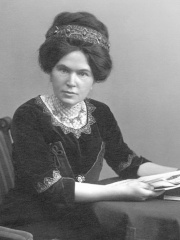
5. Aspazija (1865 - 1943)
With an HPI of 62.50, Aspazija is the 5th most famous Latvian Writer. Her biography has been translated into 31 different languages.
Aspazija was the pen name of Elza Johanna Emilija Lizete Pliekšāne (née Elza Rozenberga; 16 March 1865 – 5 November 1943), a Latvian poet and playwright. Aspazija is the Latvian transliteration of Aspasia.

6. Ferdynand Antoni Ossendowski (1876 - 1945)
With an HPI of 62.02, Ferdynand Antoni Ossendowski is the 6th most famous Latvian Writer. His biography has been translated into 24 different languages.
Ferdynand Antoni Ossendowski (Polish pronunciation: [fɛrˈdɨnant anˈtɔɲi ɔssɛnˈdɔfskʲi]; 27 May 1876 – 3 January 1945) was a Polish writer, explorer, university professor, and anticommunist political activist. He is known for his books about Lenin and the Russian Civil War in which he participated.

7. Maria Skobtsova (1891 - 1945)
With an HPI of 61.92, Maria Skobtsova is the 7th most famous Latvian Writer. Her biography has been translated into 21 different languages.
Maria Skobtsova (20 [8 Old Calendar] December 1891 – 31 March 1945) was a Russian noblewoman, poet, nun, and member of the French Resistance during World War II. Also known as Mother Maria, Saint Mary of Paris, or Mother Maria of Paris, she has been canonized a saint in the Eastern Orthodox Church and is remembered with a Lesser Feast in the Episcopal Church, the Anglican Church of Canada, and the Anglican Church of Australia.

8. Vilis Lācis (1904 - 1966)
With an HPI of 60.90, Vilis Lācis is the 8th most famous Latvian Writer. His biography has been translated into 26 different languages.
Vilis Lācis (born Jānis Vilhelms Lāce (Old orthography: Jahn Wilhelm Lahze) on 12 May 1904, died 6 February 1966) was a Latvian writer and communist politician.

9. Vizma Belševica (1931 - 2005)
With an HPI of 60.20, Vizma Belševica is the 9th most famous Latvian Writer. Her biography has been translated into 28 different languages.
Vizma Belševica (May 30, 1931 – August 6, 2005) was a Latvian poet, writer, and translator. She was nominated for the Nobel Prize in Literature.
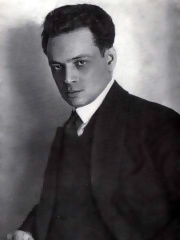
10. Yury Tynyanov (1894 - 1943)
With an HPI of 59.80, Yury Tynyanov is the 10th most famous Latvian Writer. His biography has been translated into 24 different languages.
Yury Nikolaevich Tynyanov (Russian: Ю́рий Никола́евич Тыня́нов, IPA: [ˈjʉrʲɪj nʲɪkɐˈlajɪvʲɪtɕ tɨˈnʲænəf]; October 18, 1894 – December 20, 1943) was a Soviet writer, literary critic, translator, scholar and screenwriter. He was an authority on Pushkin and an important member of the Russian Formalist school. Born in a Jewish community in the Russian Empire in modern-day Latvia, he moved to Saint Petersburg where he completed his education. During the 1920s in the Soviet Union, he published numerous novels, works, and movie scripts, as well as working as a translator. However, his health declined during the 1930s and he died in 1943 from multiple sclerosis.
People
Pantheon has 30 people classified as Latvian writers born between 1751 and 1994. Of these 30, 1 (3.33%) of them are still alive today. The most famous living Latvian writers include Gints Zilbalodis. The most famous deceased Latvian writers include Aron Nimzowitsch, Rainis, and Jakob Michael Reinhold Lenz. As of April 2024, 1 new Latvian writers have been added to Pantheon including Gints Zilbalodis.
Living Latvian Writers
Go to all RankingsDeceased Latvian Writers
Go to all RankingsAron Nimzowitsch
1886 - 1935
HPI: 68.87
Rainis
1865 - 1929
HPI: 65.60
Jakob Michael Reinhold Lenz
1751 - 1792
HPI: 64.82
Barbara von Krüdener
1764 - Present
HPI: 62.83
Aspazija
1865 - 1943
HPI: 62.50
Ferdynand Antoni Ossendowski
1876 - 1945
HPI: 62.02
Maria Skobtsova
1891 - 1945
HPI: 61.92
Vilis Lācis
1904 - 1966
HPI: 60.90
Vizma Belševica
1931 - 2005
HPI: 60.20
Yury Tynyanov
1894 - 1943
HPI: 59.80
Kristjan Jaak Peterson
1801 - 1822
HPI: 59.80
Krišjānis Barons
1835 - 1923
HPI: 59.11
Newly Added Latvian Writers (2025)
Go to all RankingsOverlapping Lives
Which Writers were alive at the same time? This visualization shows the lifespans of the 25 most globally memorable Writers since 1700.


